March 2018 Seminole Bass
with Jason Smith
Bass in most of our lakes are moving near spawning areas, but Lake Seminole is so far south that some have already spawned, some are spawning and some are just off bedding areas ready to move in and fan beds. You can catch them on sandy flats, in pockets and on sandbars on the main lake right now.
Seminole is a big, shallow lake in the corner of Georgia, Alabama and Florida. Everywhere you look makes you think you can catch a bass there. Grass and stumps are all over the lake, with lily pads and cattails lining the banks and shallows. But if you don’t know key areas you can do a lot of casting without a bite.
For the past year or so bass fishing has been fantastic on Seminole, with many tournaments won with 30 pound plus stringers. If you fish a local pot tournament against fishermen that know the lake well you better have more than 20 pounds to even hope for a check. Five and six pounders are common, and it usually takes a seven plus to win the big fish pot.
Jason Smith lives in Albany, Georgia and has fished Seminole all his life. His mentor, Jackie Hambrick, was a well known Lake Seminole expert. Fishing with the Albany Bassin Buddies taught him a lot about the keys to catching bass.
Jason loves fishing so much he started Buddha Baits, selling jigs, spinnerbaits, bladed jigs, soft baits, line and rods and reels to fishermen. He keeps in touch with local experts and this helps catch big fish when he goes to the lake.
In a Seminole Winter Trail tournament in mid-January, Jason had 24 pound stringer and did not get a check. That tournament shows the kind of fish being caught this year on Seminole.
“I love Seminole because you can catch so many quality fish,” Jason said. March is the best month to find the sows in the spawning areas many years, and our cold winter has stacked them up even more this year, delaying the early spawners that sometimes go on the bed on Seminole as early as January.
Jason will have as variety of his baits rigged on his rods for March fishing. Since most of the fish will be located around grass or other weed cover, he throws most of them Buddha Braid since you need braid to get big fish out of the weeds.
He will have a rattle bait, a Texas rigged lizard or Senko, Swagger Swim worm, an Enlightened Swim Jig, a Carolina rigged lizard or Trick worm, a bladed Swagger Jig and an Inseine Jig and pig all ready to cast. For thick hyacinth beds he will be ready to flip them with a Baby Mama with a 1.5 ounce sinker.
We fished Seminole the last day of January after a cold front, with bluebird skies and little wind, some of the worst possible weather. Even under those bad weather conditions we had a decent limit with a 5.5 pounder to anchor it. The fish were not really in the bedding areas yet but just off them, ready to move in so you can catch them.
1. N 30 47.304 – W 84 48.447 – Going up Spring Creek the Grassy Flats cut, marked by poles going off the Spring Creek Channel to the left going upstream, is just downstream of the Big Jim’s Cut. Where the Grassy Flats cut hits the creek channel on the left, on your right an island is just off the creek channel. A ditch runs in behind the island and forms a good staging area going into the spawning flat behind the island, the ideal area for this time of year.
Idle in to the point through the standing timber and start by working it with a Carolina rig and jig and pig out near the channel and ditch junction. There are stumps and grass on it. Start out deep and work up the ditch to the shallow spawning flat.
There is a grass edge around the point and on the ditch side. Keep your boat off it and fish a bladed jig through the grass. Work fairly fast until you get a bite then slow down and make multiple casts with your bladed jig and follow up with a Carolina rig.
As bass move back they follow the grass edge and feed, then move into the shallow water behind it to spawn. Keep a watch for beds behind the grass as you fish. There will usually be several grouped together with empty space between them. When you spot a bed fish it with a paddle tail Baby Mama, swimming it up to the bed and letting it fall into the bed.
2. N 30 44.878 – W 84 50.604 – Out on the Flint River, on the south bank before the turn toward the dam, River Junction ramp is on your right going upstream. Bass hold out on the grass line in six to eight feet of water then move to the bank in the shallow bay to spawn.
Start by fishing the outside grass line, especially if the water is still cold. We caught a couple of keepers out here. Then go back in behind the grass and work the bedding area. Keep your boat in about five feet of water and fan cast a swim worm behind a one quarter to five sixteenths ounce sinker.
Also drag a Carolina rigged lizard through the shallows, searching for bedding fish. The water is often too stained on the Flint to see the beds, so probe for them with a lizard. Since beds are usually grouped together, make multiple casts to any area you catch a fish.
3. N 30 45.087 – W 84 50.005 – Going up the Flint upstream of the River Junction Ramp another bay swings back, providing a more protected spawning area. Fish it the same way as hole #2. You will see cattails on the bank and lily pad steams in the water. Watch for them everywhere you fish since they grow on sandy bottoms where bass spawn.
For covering water more quickly until you hit a group of bass a bladed jig works well. Jason rigs his black and blue or green pumpkin Swagger Jig with a matching three or four-inch swimbait and fishes it through the grass. A paddle tail worm also allows you to cover water more quickly to find the key spots.
4. N 30 46.014 – W 84 50.517 – The big flats between Spring Creek and the Flint are huge spawning areas. Straight across from Sealy Point in Spring Creek, a small group islands is just off deeper water that goes in on the flat and is a highway for the bass moving in.
The downstream island in this group is a cluster of cypress trees and is closest to the deeper water. Go in to the downstream side of the island and fan cast the whole area, keeping your boat in four or five feet of water and casting all around. Drag a Carolina rigged lizard or fish a little faster with a bladed jig, working the whole area.
Always watch for beds in areas like this. If you see a lighter spot on the bottom, look at it closely. There are light spots on the bottom that are not beds but the active beds will be brighter, and there will often be several close together. When you see them slow down and fish a paddle tail worm all around them and in them. The water is clearer here from Spring Creek and you can usually see them.
5. N 30 46.181 – W 84 50.056 – Go around the island in Hole #4 and another smaller island is on the Spring Creek side a little upstream. It is more shallow around it and you can see clumps of cat tails, pad stems and grass all around it. Sunny warmer days warm this water quickly and move bass into the area early
Start on the downstream end of the smaller island and fish on the side away from Spring Creek, working upstream behind it. The flats all around it have sandbars for the bass to spawn and there are often a lot of beds in the area. Fish from the bank of the island all the way out to deeper water. Just remember deeper water here is only three feet deep or so.
6. N 30 44.748 – W 84 52.621 – On the Chattahoochee River side of the point between it and the Flint, a group of poles in a circle way off the last island on the point mark the Indian Mounds. On the Chattahoochee River side of the island, across from the Indian Mounds, a shallow bay forms a good spawning area.
There are scattered stumps as well as grass in this bay and bass spawn all over it. Keep your boat in four or five feet of water and fish the water three or four feet deep, fan casting all over the flat. You may not be able to see the beds in the more stained river water, but they will be here, and grouped together like in other places.
Fish from near the downstream point of the island up the Chattahoochee River side. Watch for lily pad stems marking sandy areas. A bladed jig comes through them well and is a good choice for a search bait. A Carolina rig is good for slowing down and working an area.
7. N 30 45.542 – W 84 47.298 – Up the Flint River on the right bank going upstream, a wide bay swings in away from the channel markers. On the upstream end of the bay a wood dock with no top sits out on the downstream side of the point. Downstream of the dock slightly deeper water is closer to the bank.
Start about 200 yards down the bank from the dock and fish toward it, casting to the bank and the scattered grass. Sometimes a red rattle bait will attract bites in areas like this when other baits are ignored. A swim jig like Jason’s Enlightened jig or Inseine Jig will also attract bites from more active fish, especially if they are feeding on bluegill.
Work the rattlebait fast, jerking it from grass when you hit it. With the swim jig keep it near the surface and work it with twitches as you reel it along. Jason likes bluegill or green pumpkin in clearer water and black and blue in stained water and puts a matching swim bait on his jig.
8. 30 45,.759 – W 84 46.104 – a little further up the river the channel makes a hard swing from the right bank to the left. In the flat bay just downstream of the last channel marker before the turn a depression runs back to the bank, offering a good path for bass to follow. It goes in between two groups of two docks. There is one silver roof dock and one green roof dock on each side.
Follow this depression in from deeper water, fan casting to both sides of it and down the middle of it. The water is ten to 12 feet deep not far off the bank where it goes in. This is a good area for rattle baits and bladed jigs. When you get to the bank fish it and down both sides to the docks. A paddle tail swim worm like Jason’s new Swagger Swim Worm in tilapia or black and blue is good, depending on water color. Keep the worm moving near the bottom, making the flapping tail wiggle to get bites. Jason will often dip the tail of his plastics in chartreuse JJs Magic for added attraction.
9. N 30 46.215 – W 84 46.989 – Across the river channel Fort Scott Islands are a Waterfowl Management Area. A small island sits just off the bank where the channel comes across and hits the north bank. Just downstream of this island is a big flat just off a slough that goes back and is a good bedding area, full of lily pad steams and cattails.
Keep your boat off the bank in water about 20 feet deep. This is a good place to cast your jig and pig, Texas rigged worm or Carolina rig up onto the sand bar that runs along the bank and has grass on it. Keep your bait in contact with the bottom as it comes out of the grass and follow the bottom down the drop.
Bass will often stack up just outside the grass and move into it to feed.
10. N 30 46.334 – W 84 48.949 – Going down the bank the “Fire Break” goes in just downstream of the island with the waterfowl management area signs out in the water. Follow the slightly deeper water in behind the island, keeping the signs to your right.
Bass spawn all back in here in the shallow sandy flats. Watch for keys like lily pad stems and cattails and fan cast the whole area. Try a variety of baits and speeds to find fish then slow down and fish that area.
All these places hold bedding bass right now, and others post and pre-spawn. Try them with Jason’s baits to catch quality bass all month long.
Do you find these Map of the Month articles helpful? If so visit https://fishing-about.com/keys-to-catching-georgia-bass-ebook-series/ – you can get an eBook or CD with an article for each month of the year on Clarks Hill and Lanier.
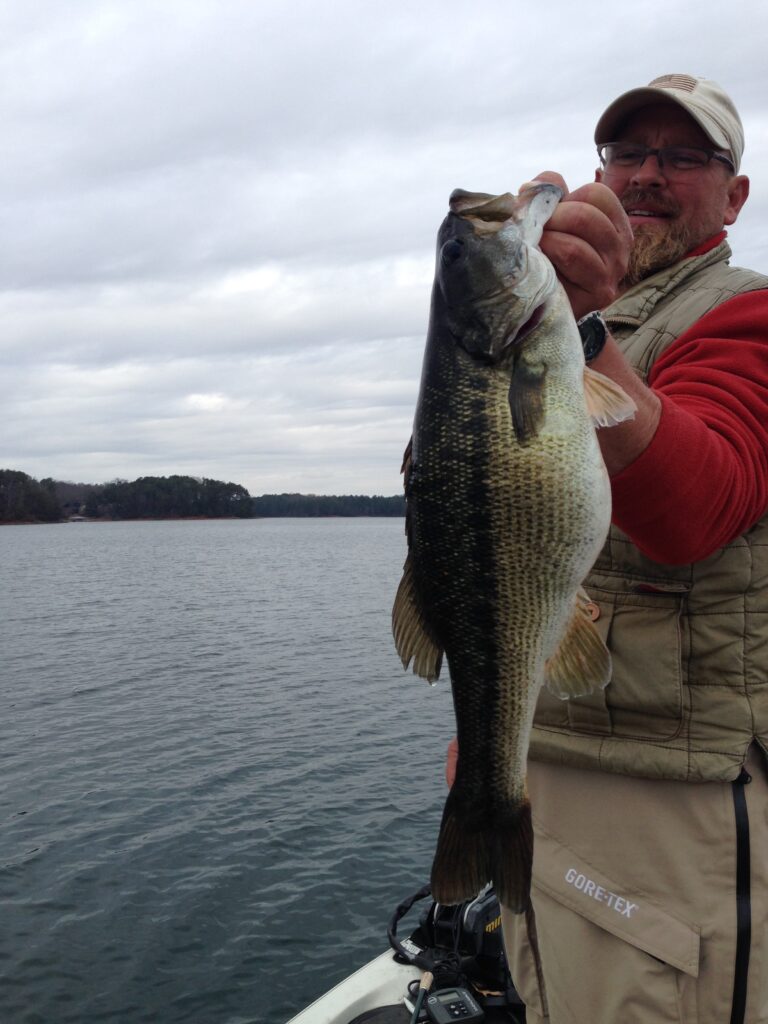
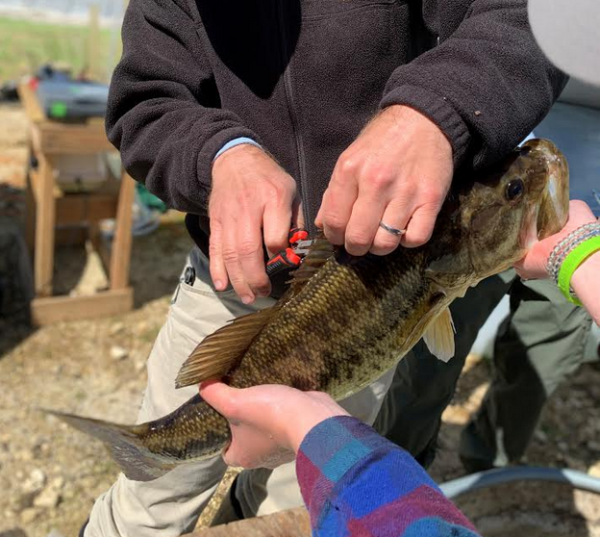
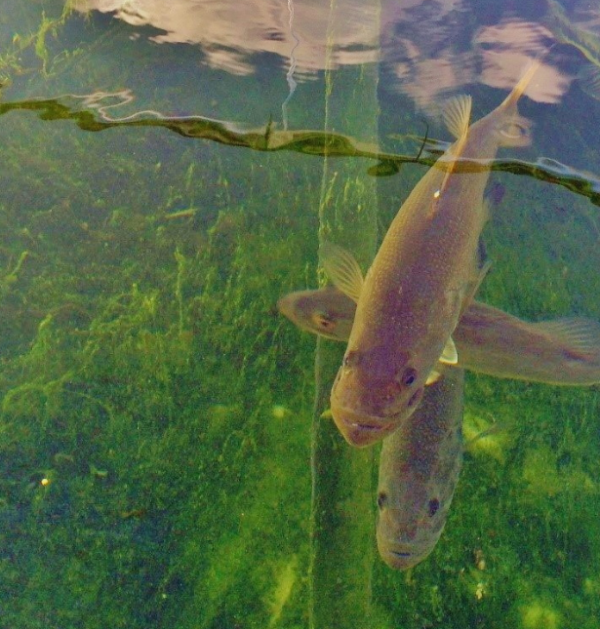 None of the bass with missing spines perished. Overall condition between fish with spines intact and those with spines removed did not vary to any great degree at the conclusion of the month-long study. In the end, the method shows much utility as a means for black bass fishery managers to gather more data on trophy fish without deleterious effects on the fish and the fish population. The method also holds promise down the road for citizen-scientists—anglers, that is—to weigh and measure and trim a spine before releasing trophy fish, thus greatly expanding the essential data scientists need.
None of the bass with missing spines perished. Overall condition between fish with spines intact and those with spines removed did not vary to any great degree at the conclusion of the month-long study. In the end, the method shows much utility as a means for black bass fishery managers to gather more data on trophy fish without deleterious effects on the fish and the fish population. The method also holds promise down the road for citizen-scientists—anglers, that is—to weigh and measure and trim a spine before releasing trophy fish, thus greatly expanding the essential data scientists need.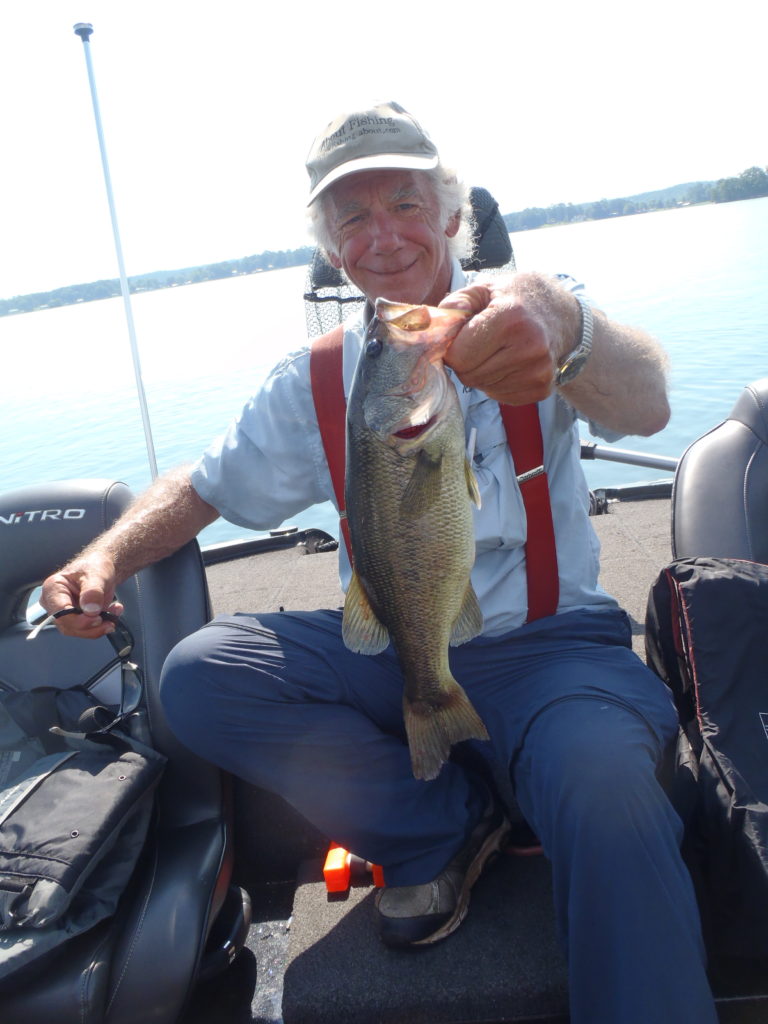
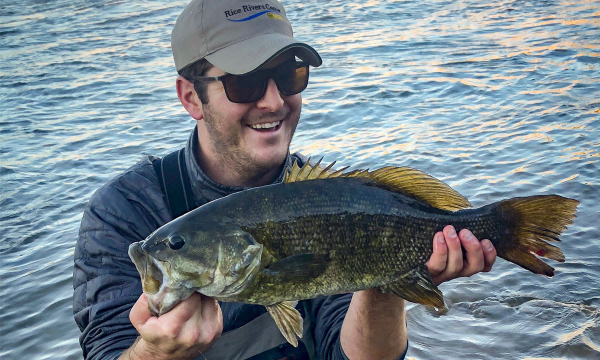 The author with a trophy smallmouth bass from the James River in downtown Richmond. Fall is one of the best times of the year to target big smallmouth bass across the state.
The author with a trophy smallmouth bass from the James River in downtown Richmond. Fall is one of the best times of the year to target big smallmouth bass across the state.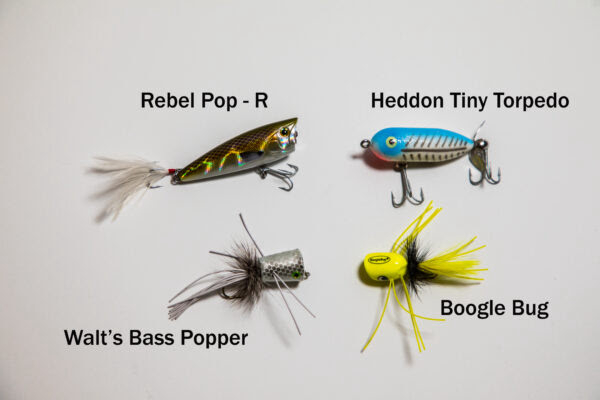 September and October are great months to fish topwater lures and flies for Virginia smallmouth bass. Photo by Meghan Marchetti/DGIF.
September and October are great months to fish topwater lures and flies for Virginia smallmouth bass. Photo by Meghan Marchetti/DGIF.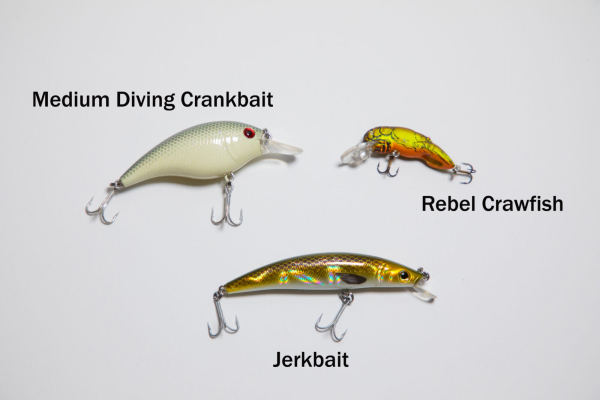 Subsurface lures work well when targeting fall smallmouth. Photo by Meghan Marchetti/DGIF.
Subsurface lures work well when targeting fall smallmouth. Photo by Meghan Marchetti/DGIF.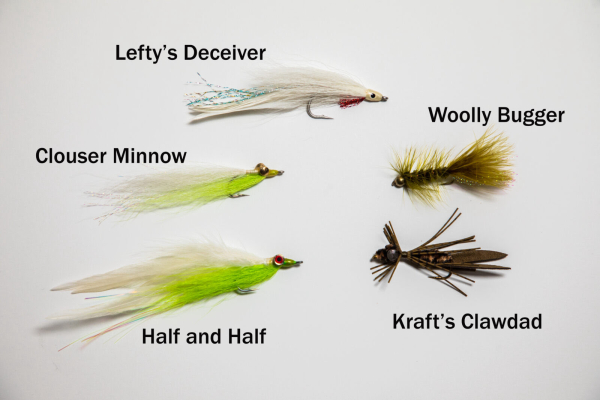 Fishing large streamers is a great technique for targeting big smallmouth bass. Consider fishing a sinktip or full sinking line in mid to late fall on our larger Virginia rivers, especially in higher flows. Photo by Meghan Marchetti/DGIF.
Fishing large streamers is a great technique for targeting big smallmouth bass. Consider fishing a sinktip or full sinking line in mid to late fall on our larger Virginia rivers, especially in higher flows. Photo by Meghan Marchetti/DGIF.